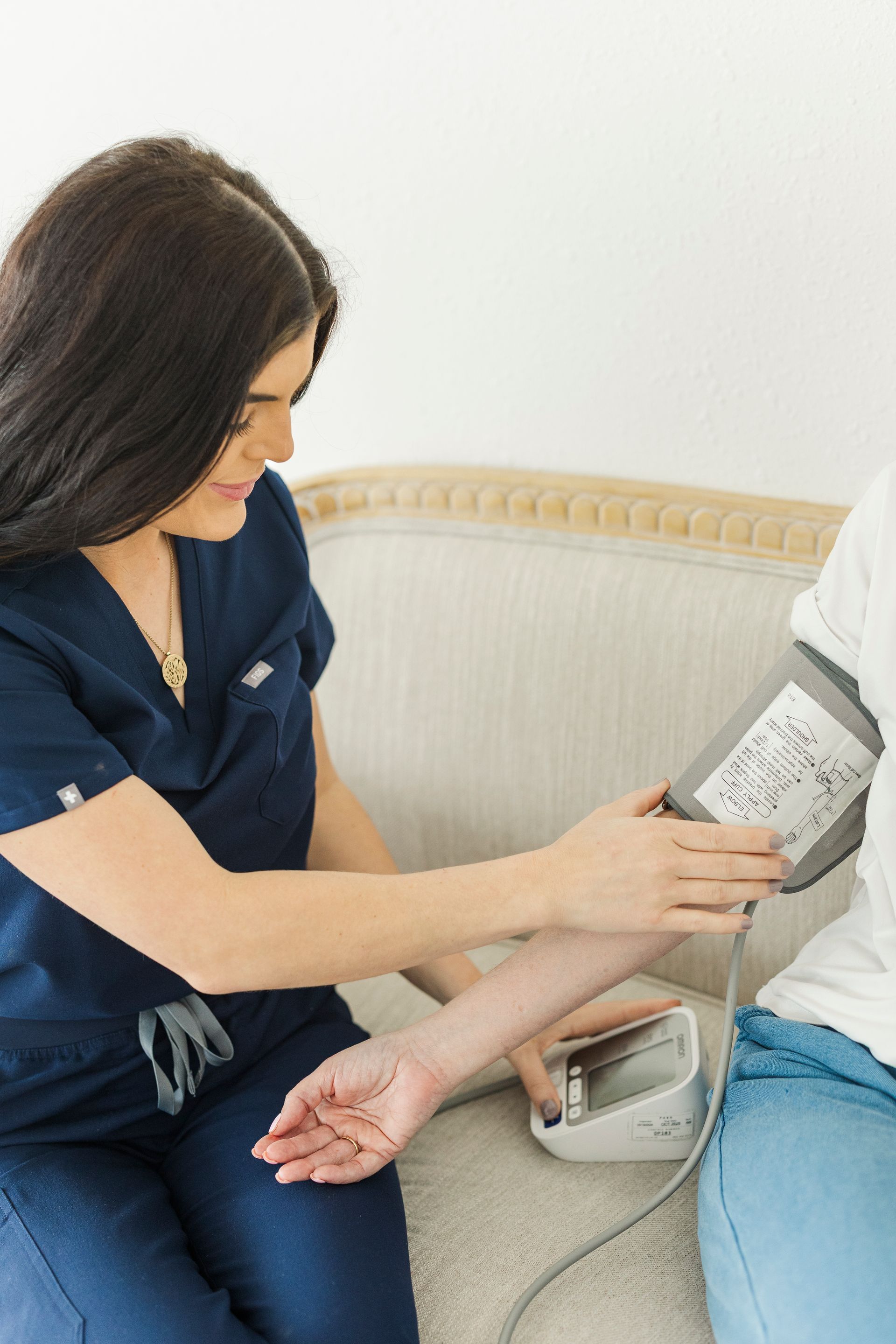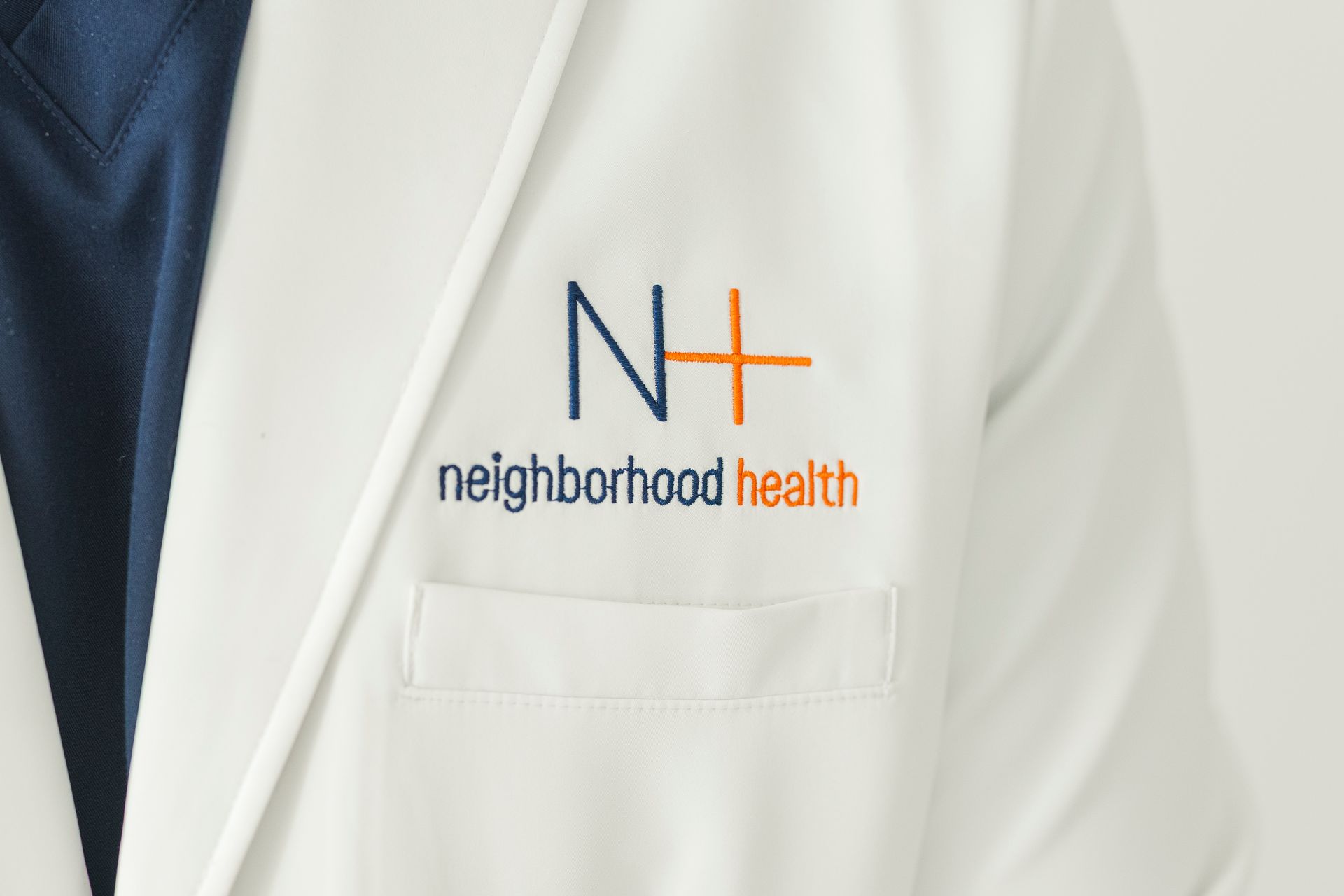Remote Patient Monitoring (RPM) at Neighborhood Health
Stay connected to your care team without leaving home. Neighborhood Health’s Remote Patient Monitoring (RPM) program uses easy-to-use devices to track your vital signs, spot issues early, and help you
manage chronic conditions between visits.
What Is Remote Patient Monitoring?
Remote Patient Monitoring (RPM) is a healthcare service that uses technology to monitor patients’ health data from outside a traditional clinic setting. With RPM, patients use medical devices that automatically record and securely send health information to Neighborhood Health in real time or on a scheduled basis. Our team reviews trends, adjusts treatment plans, and reaches out promptly if we detect concerning changes.
Goals of RPM:
- Early detection and intervention before problems worsen
- Better chronic disease management (hypertension, diabetes, heart failure, COPD)
- Improved patient engagement and adherence through daily tracking and feedback
- Fewer ER visits and hospitalizations, so patients stay healthier at home
How RPM Works: Step-by-Step
- Eligibility & Enrollment – We confirm that RPM is appropriate and that insurance coverage requirements are met.
- Device Setup – You’ll receive connected devices (cellular or Bluetooth-enabled). We help you set them up in minutes.
- Daily Measurements – Take readings as directed (e.g., blood pressure each morning). Devices transmit your data automatically to your care team.
- Continuous Monitoring – Neighborhood Health clinicians review your data dashboard for trends and alerts.
- Care Team Outreach – If something looks off, we contact you to recheck, adjust medication, or schedule a visit.
- Ongoing Care Plan – We share progress with your
primary care provider and update your plan to keep you on track.
Who Qualifies for RPM?
RPM is often covered by insurance, including Medicare, when clinical and program requirements are met. You may be a good fit if you have:
- Hypertension with fluctuating readings
- Diabetes requiring glucose monitoring and lifestyle or medication adjustments
- Heart failure where weight and oxygen levels need close monitoring
- COPD or asthma with variable oxygen saturation or symptoms
- Other conditions where frequent, remote vital-sign tracking improves outcomes
We’ll confirm medical necessity and coverage details before enrollment.

Devices We Use
- Blood pressure cuffs for hypertension management
- Connected weight scales to spot fluid changes in heart failure
- Pulse oximeters to monitor oxygen saturation in COPD and cardiac patients
- Glucose monitors to help manage diabetes (with logs for patterns)
All devices meet clinical-grade standards and securely transmit data to our HIPAA-compliant system.
Benefits for Patients & Families
- Peace of mind at home with a clinical team watching trends
- Timely medication adjustments based on real data
- Fewer urgent visits thanks to early outreach
- Simple routines that build healthy habits and accountability
- Support for caregivers with clearer guidance on day-to-day management
"Caring for my elderly mom has become so much less stressful thanks to Neighborhood Health. Their onsite and concierge medical services are a true game changer—especially since my mom lives in an assisted living facility. We no longer have to coordinate transportation or move her for every single appointment, which has been a huge relief.
The convenience is unmatched, but what really stands out is the professionalism and compassion of the staff. They keep me informed and involved in every healthcare decision, which gives me complete peace of mind. I feel like we’re truly working as a team to give my mom the best care possible.
I can’t recommend Neighborhood Health highly enough. Their model of care is not only smart and efficient—it’s deeply human. Thank you for making a difference in our lives."
Holly Normand
Privacy, Security & Data Sharing
Your information is transmitted and stored using HIPAA-compliant technology. Only authorized Neighborhood Health staff can access your data. We share relevant insights with your primary care provider to coordinate care.
Cost & Insurance Coverage
RPM is frequently covered by insurance (including Medicare) when eligibility criteria are met. Coverage can depend on the condition being monitored, the type of device, and documented clinical need. Before you start, our team verifies benefits, explains any out-of-pocket costs, and reviews consent.
What to Expect After You Enroll
- A simple daily routine (often 1–2 quick readings)
- Monthly check-ins to review progress and answer questions
- Real-time alerts if readings are out of range
- Clear goals (e.g., BP under target, steady weight, stable glucose patterns)
If your readings change, we’ll contact you to recheck, troubleshoot the device, or adjust the plan.

Getting Started with RPM at Neighborhood Health
- Talk with your provider about your symptoms and goals.
- Verify eligibility/coverage with our team.
- Enroll and set up devices (we’ll help on day one).
- Start tracking and stay connected to your care team.
FAQs: Remote Patient Monitoring
Is RPM hard to use?
No. Devices use a cellular signal to send your daily readings to your care team. We show you how to take a reading, and the device does the rest.
How often will someone review my data?
Our team checks data daily and reaches out if we see a concerning trend. However, RPM devices are not Emergency Response Units. If you are experiencing a medical emergency, please contact 911 for immediate assistance.
What if I miss a reading?
Just take the next scheduled measurement. If we notice gaps, we’ll check in to help you get back on track.
Do I still need in-person visits?
Yes. RPM complements, not replaces, regular appointments.
Will insurance cover it?
Medicare Part B and many commercial insurance plans provide coverage for RPM. Before we begin a treatment plan, we will verify your insurance coverage and inform you of any associated costs.

